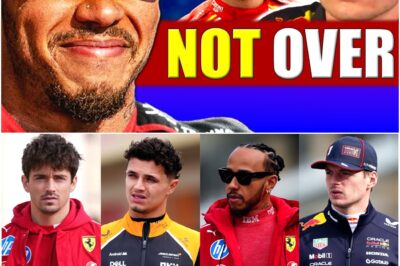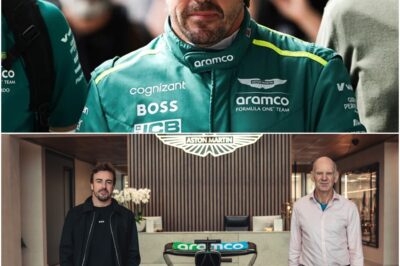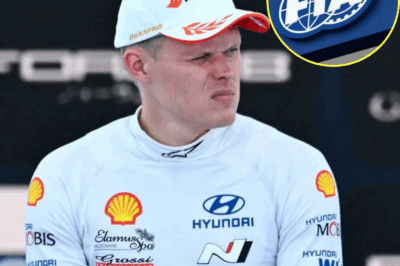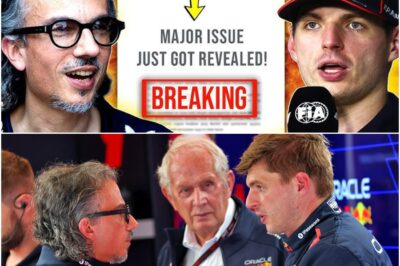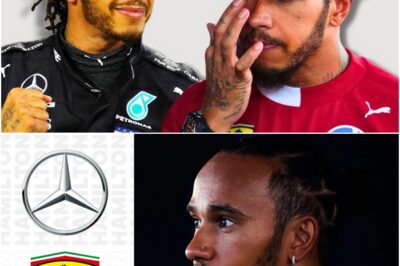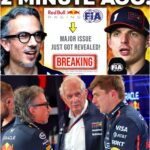Why the World’s Most Famous Car Brands Avoid Formula 1
Formula 1 likes to call itself the pinnacle of motorsport — the fastest cars, the best engineers, the most advanced automotive technology on Earth. On paper, you’d expect the grid to be packed with the biggest and most prestigious names in the car world. Surely, if this is the ultimate proving ground, every exotic and supercar manufacturer would be fighting for a spot.
And yet, that’s not what you see when the lights go out on Sunday. Alongside giants like Ferrari and Mercedes, there’s Haas — an American outfit that doesn’t even make road cars. Alpine, Renault’s sporting sub-brand, is better known to F1 fans than to the general public. Cadillac is arriving in 2026, but they’re synonymous with luxury cruisers, not racing thoroughbreds. Audi’s entry that same year will be a big move, but their presence still leaves a long list of famous absentees.
Where’s Lamborghini? Where’s Porsche? Where’s Bugatti? Where’s Koenigsegg? These brands dominate the walls of teenage car enthusiasts, rule the supercar conversation, and define aspirational motoring. Yet in Formula 1, they’re nowhere to be found. Even Toyota — the largest car manufacturer in the world — walked away after a costly, winless stint in the 2000s, and now appears only as a sponsor.
If Formula 1 is the stage for speed, engineering brilliance, and prestige, why aren’t these names lining up to compete? The answer lies in a combination of staggering costs, political hurdles, brand protection concerns, and cold business logic.

The Billion-Dollar Entry Fee
Becoming a works team in F1 — meaning you design your own chassis, build your own power unit, and operate under your own brand — is astronomically expensive. Simply competing, without embarrassing yourself, requires hundreds of millions of dollars annually. That’s just to fight in the midfield, not to win.
The setup costs alone are daunting. You need a state-of-the-art factory, a wind tunnel, advanced simulation programs, hundreds of staff with F1 experience, a global logistics network, and a complex operational structure. This takes years to assemble before a single wheel turns.
And then there’s the anti-dilution fee — a payment to existing teams to compensate for sharing prize money with an extra competitor. When Cadillac partnered with Andretti for a planned 2026 entry, the fee stood at $200 million. Under the upcoming Concorde Agreement, that number is expected to double. Reports suggest Cadillac’s real bill will be closer to $450 million before a car is even designed.
Add up the entry fee, infrastructure investment, and operating budget for the first two seasons, and a newcomer could easily be looking at over a billion dollars just to join the grid. And even with that kind of investment, success is far from guaranteed.
Brand Risk: The Fear of Losing
If you’re Lamborghini, Bugatti, or Porsche, your brand image is built on being fast, exclusive, and untouchable. Formula 1’s ruthless competition can jeopardize that image in weeks. Arrive with big promises, and if you spend years getting beaten by a smaller, customer-engine-buying team, the PR damage can be devastating.
Honda learned this the hard way. Returning to F1 in 2015 with McLaren, they promoted themselves under the banner of “The Power of Dreams.” Instead, their early hybrid engines were slow, unreliable, and ridiculed by fans and rivals. Though Honda eventually built a championship-winning engine for Red Bull, their initial struggles left a long shadow.
For niche luxury brands, public humiliation is a nightmare. Prestige can take decades to build, but one season of being lapped can erode it quickly.

ROI: Not All Eyes Are Buying Eyes
Here’s the uncomfortable truth: Formula 1 doesn’t make marketing sense for every manufacturer. Lamborghini sells around 10,000 cars a year. Bugatti sells fewer than 150. Their customers are ultra-wealthy, and they don’t need F1 to influence their buying decisions. These companies build hype through exclusivity, private events, limited-run specials, and eye-catching design, not through global mass-audience sports.
For these brands, spending hundreds of millions annually to market to millions of people who will never buy their cars is a poor return on investment.
The Ferrari Question
This logic invites a fair question: if it’s such a poor investment, why is Ferrari still here? The Scuderia has been in F1 since its inception in 1950. They’re the sport’s most iconic team — and yet, they haven’t won a championship since 2008.
In that time, Red Bull went from newcomers to serial champions. Mercedes built one of the most dominant streaks in sports history. McLaren is on the rise again. Ferrari, meanwhile, has become associated with strategy blunders and inconsistency rather than the relentless winning that defined them decades ago.
For Ferrari, the exposure, heritage, and merchandising revenue seem to outweigh the risk of tarnished prestige. But it’s worth asking how long a “legend” can endure without adding new chapters of success.

Politics: The Closed Club
Formula 1 is increasingly run like a franchise league. The teams hold significant power and protect their interests fiercely. When Andretti, backed by Cadillac, pushed for entry, several teams resisted. Their reasoning was simple: a new team means the prize money pie gets split into more slices, and the competitive landscape becomes even tougher.
If a big-name manufacturer like Bugatti or Lamborghini tried to join, they’d face the same resistance — perhaps more, as rivals might see them as a potential prestige threat.
Technology Mismatch
Modern F1 engines are 1.6-liter turbo-hybrid V6s with extraordinarily complex energy recovery systems. They’re technical marvels, but they have little in common with the naturally aspirated V12s or quad-turbo W16s found in exotic road cars. The incoming 2026 regulations will push the sport even further toward electrification, with a 50/50 split between internal combustion and electric power.
For many supercar makers, F1 technology simply doesn’t align with their product lines. Porsche, for example, has focused on endurance racing, where hybrid systems and efficiency technologies are more relevant to their road cars.
The Graveyard of Big Names
Even if a manufacturer clears the political and technical hurdles, history offers a sobering warning. Toyota spent eight years and enormous sums in F1 without a single win. BMW partnered with Williams successfully, bought Sauber, and quit after one poor season. Jaguar lasted just five years before selling their team to Red Bull. Honda has entered and exited multiple times.
For a brand executive studying these case studies, hesitation is understandable.
The 2026 Opportunity — and Why It Still Might Not Be Enough
The upcoming 2026 rules aim to attract more manufacturers with cost caps, sustainable fuels, and greater emphasis on hybrid technology. This is why Audi is joining, and why General Motors (via Cadillac) is testing the waters.
But for ultra-luxury brands like Lamborghini, Bugatti, and Koenigsegg, the gamble remains enormous. Even if the barriers are lower than before, the combination of cost, politics, and risk means the potential rewards still may not justify entry.
Why Staying Out Might Be the Smartest Move
The next time you see Haas trundling at the back and wonder why Lamborghini or Bugatti isn’t there instead, remember that F1 isn’t just about building the fastest car. It’s about navigating a complex web of politics, economics, brand strategy, and survival in a sport where even the most powerful names can fail.
For some manufacturers, the bravest — and smartest — decision is not to play the game at all.
And for those of us who dream of a grid packed with every legendary name in motoring? We may have to accept that in Formula 1, prestige alone is never enough to make the lights go green.
Full Video:
News
Lewis Hamilton Finally Breaks His Silence on the Explosive Ferrari Speculation That Has Been Shaking the F1 World for Weeks – But His Mysterious Words Have Left Fans Even More Confused and Wondering If a Shocking Team Switch Could Actually Be Just Around the Corner
Formula 1 Mid-Season Shake-Up: Hamilton, Red Bull, and the Road to 2026 The summer break is often a time for…
Aston Martin F1 chief agrees with Fernando Alonso about ‘concerning’ situation!
Fernando Alonso finished fifth and Lance Stroll seventh in Hungary, an impressive result just one weekend on from a disastrous…
World Rally Championship star handed severe punishment for hitting FIA official with car!
One World Rally Championship star is walking a points deduction tightrope after an accident while competing saw him hit an…
In what insiders are calling one of the most dramatic developments in recent Formula 1 history, Red Bull’s relationship with Max Verstappen has reportedly hit a critical point, as a long-hidden problem explodes into public view, raising serious questions about the future of both driver and team.
Hungarian Heartbreak: Is Red Bull’s F1 Empire Finally Crumbling? The 2025 Hungarian Grand Prix was more than just another race…
Hard question for F1: should Lewis Hamilton have retired at the end of 2021, closing the book after heartbreak and controversy, rather than risking years of near‑misses, bruising headlines, and whispered doubts — or is the long game quietly setting up the most satisfying comeback story of his career?
Should Lewis Hamilton Have Retired at the End of 2021? When it comes to Lewis Hamilton, nuance rarely survives the…
Whispers about Hamilton’s future intensify after hush-hush meetings leak to the press, sparking wild speculation. Following his shocking high-speed crash in testing, a cryptic new statement adds fuel to the mystery, and the racing world braces for an announcement that could change everything in the coming days.
Franco Colapinto’s Hungary Crash Statement & Fresh Rumors on Lewis Hamilton’s Future The Formula 1 paddock has been buzzing this…
End of content
No more pages to load

